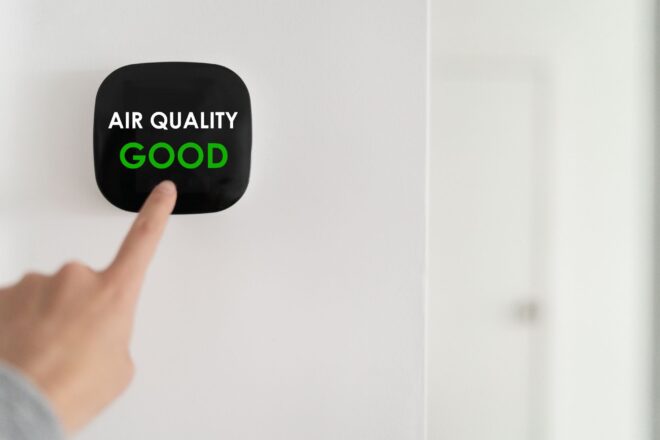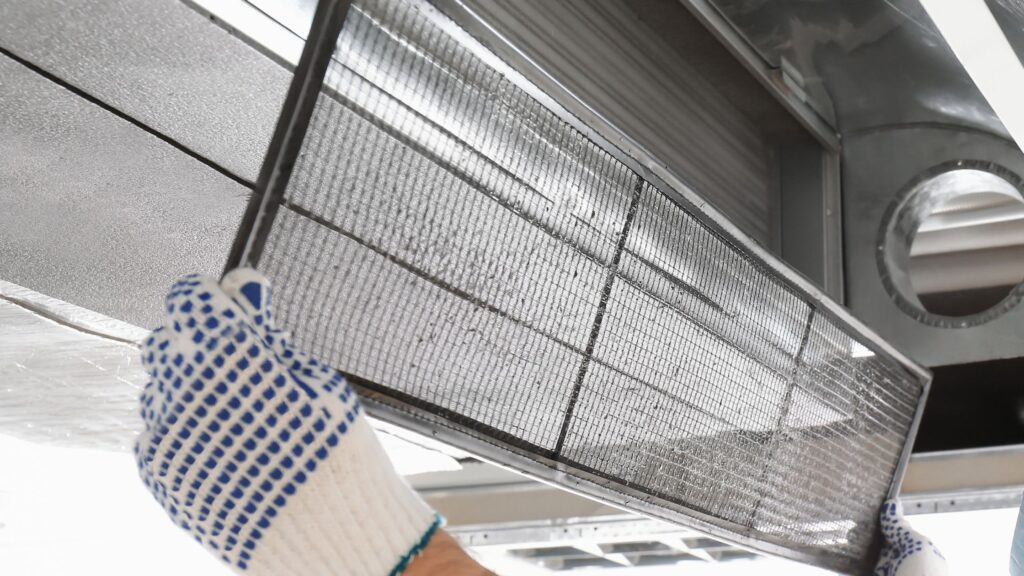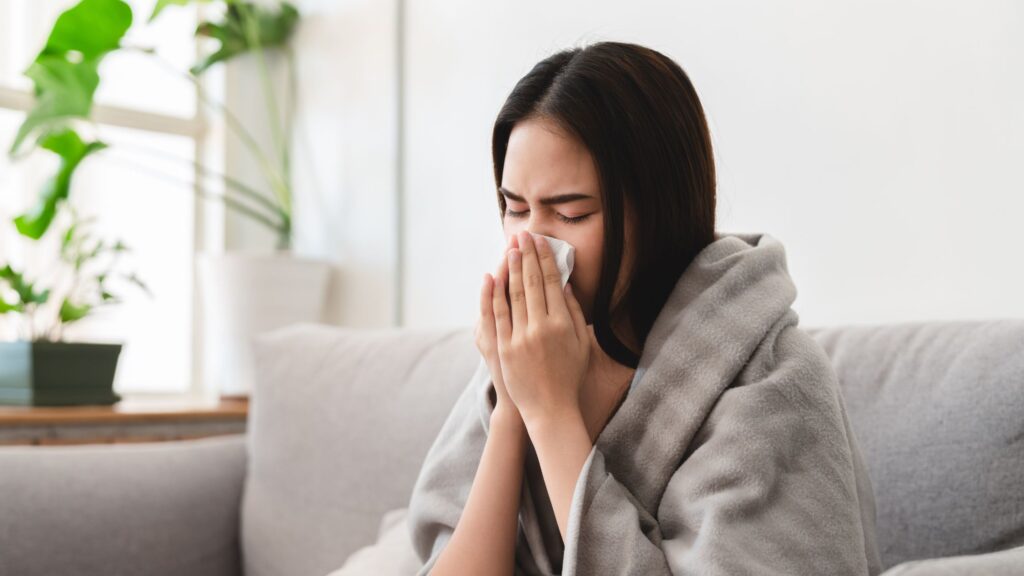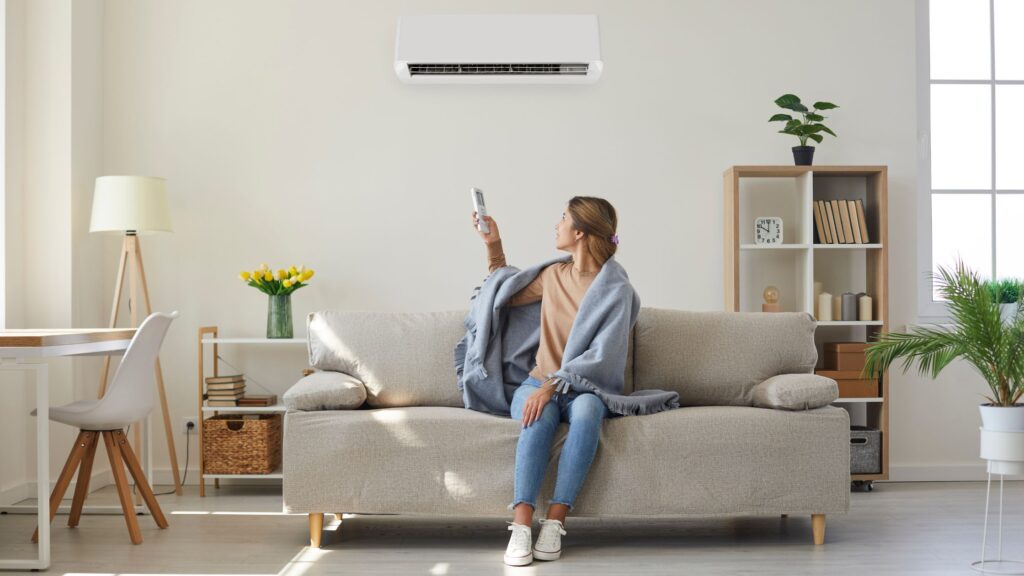Indicators of Low Air Quality within Your Home

Amidst the busy routines of everyday life, it’s common to neglect a fundamental aspect that significantly influences our health: the air quality within our homes. Air pollution silently lurks, often escaping notice until its negative consequences become too obvious to disregard. In this blog, we’ll explore the signs of subpar air quality and air pollution, shedding light on the subtle cues that suggest our home environment could impact our health.
Sources of Indoor Pollution
Indoor pollutants originate from a wide range of origins, posing various potential hazards within our residences. Household cleaning products contribute to indoor air pollution by emitting airborne chemicals during regular use. Additionally, off-gassing from furniture and different construction materials introduces volatile organic compounds (VOCs) into indoor spaces, which can linger and elevate particle pollution levels, thereby impacting air quality.

Recognized as a significant contributor to indoor pollution, tobacco smoke releases harmful particles and toxins, exacerbating air quality issues. Besides these common sources, cooking emissions, especially from specific cooking techniques, can further compound indoor pollution, potentially posing risks to health.
Furthermore, mould and mildew, often resulting from excessive moisture, can release spores and mycotoxins into the air, significantly compromising air quality. Identifying and rectifying these sources is crucial for preserving a healthy indoor environment, safeguarding the occupants’ well-being, and promoting respiratory health overall.
Insufficient Ventilation
Poor ventilation presents a significant risk to air quality. Spaces with inadequate ventilation create a confined environment where pollutants remain trapped, unable to dissipate. This lack of proper air circulation worsens the situation, allowing contaminants to accumulate gradually. Without a steady influx of fresh air, indoor air can stagnate, leading to higher concentrations of harmful particles and jeopardizing the health of occupants. Addressing ventilation issues is essential to ensure a continuous supply of clean air and prevent the buildup of pollutants indoors.
Subtle signs may indicate poor air quality within your home, often resulting in adverse health effects. These symptoms serve as vital indicators that the indoor air you’re breathing may compromise your well-being. Recognizing and understanding these signs is the initial step in creating a healthier living environment for yourself and your family.
Breathing Problems
Air pollution is a significant public health issue, especially concerning respiratory health. The existence of pollutants like particulate matter, ozone, and other harmful substances in the air can damage the respiratory system. Extended exposure to low-quality air has been associated with a range of respiratory problems, including asthma attacks, bronchitis, an elevated likelihood of respiratory illness, and worsening the risk of lung disease, including lung cancer.

Persistent Tiredness and Fatigue
Even with sufficient sleep, ongoing fatigue and lethargy may signify more than a busy schedule. Poor air quality profoundly affects our health, energy, and vitality. Pollution diminishes oxygen delivery to our cells, leading to reduced energy and overall weakness.
Air pollution poses significant health risks, straining our respiratory and cardiovascular systems as they work harder to provide oxygen to vital organs. This increased demand not only taxes internal functions but also contributes to exhaustion. Exposure to pollution can induce persistent fatigue, affecting daily tasks and reducing our ability to perform optimally.
Frequent Headaches
Headaches are often overlooked as a symptom of air pollution. Exposure to pollutants like volatile organic compounds (VOCs) emitted from household products and construction materials can contribute to persistent headaches. These compounds infiltrate indoor spaces and have been linked to increased headache frequency and severity. If you’re using pain relievers more often without a clear reason, it’s wise to check your home’s air quality.
Allergic Reactions
Allergic reactions act as the body’s natural defense mechanism against foreign substances, and the impact of air pollution in triggering these responses is significant. When exposed to polluted air, individuals may experience an increase in allergy symptoms, ranging from common sneezing and a runny nose to more troublesome indications such as itchy eyes or skin rashes. If you notice a heightened occurrence of these symptoms, it could suggest that allergens in your home are affecting your health.

Recognizing the sources responsible for indoor allergies is essential, with typical suspects including dust mites, pet dander, and mould spores. These allergens flourish in settings with insufficient ventilation or poor cleanliness, intensifying allergic responses.
Decline in Cognitive Function
Poor air quality affects both physical health and cognitive function. Exposure to indoor air pollutants, such as volatile organic compounds (VOCs) and particulate matter, can lead to cognitive decline, impacting memory, concentration, and problem-solving abilities. If you’re experiencing mental clarity issues, it’s worth investigating your home’s air quality. Improving indoor air quality through ventilation and minimizing pollutant sources is essential for maintaining cognitive function alongside physical health.
Unpleasant Odours
Persistent and unpleasant odours in your living space may signal air quality issues beyond minor annoyances. Smells from cooking, tobacco smoke, or mold could indicate harmful pollutants in the air. While airing out or using fans may help, recognizing foul smells could indicate the need to investigate indoor pollution sources further.

Moisture and Mould Challenges
Excess moisture in indoor environments not only causes discomfort but also promotes mould and mildew growth, posing significant threats to indoor air quality. Mould spores thrive in damp conditions and can produce allergens and irritants, leading to respiratory issues and other health problems when inhaled. Recognizing indicators such as water stains, musty odours, or visible mould growth is crucial as they signal potential compromises in indoor air quality. Addressing moisture-related challenges promptly is essential for safeguarding occupants’ health and maintaining a healthy indoor environment.

How to Enhance Indoor Air Quality
Improving indoor air quality is crucial for a healthy home. Ensure proper ventilation by regularly opening windows and doors, especially in moisture-prone areas like bathrooms and kitchens. Using exhaust fans can prevent mold and mildew buildup. Additionally, investing in a HEPA filter-equipped air purifier can capture pollutants like dust and pet dander, further enhancing air quality.
Reducing indoor pollutants is essential for better air quality. Avoid indoor smoking to prevent harmful chemicals from lingering. Opt for eco-friendly cleaning products to minimize volatile organic compound (VOC) emissions. Regular cleaning and using air-purifying plants like spider plants or peace lilies help filter indoor air naturally.
Controlling humidity is crucial for a healthy home. Excess moisture can lead to mold and dust mites, harming air quality. Use dehumidifiers in damp areas and fix leaks promptly. Also, regularly clean and replace HVAC filters to efficiently remove airborne particles.
Recognizing and addressing sources of poor indoor air quality is vital for your well-being and your family’s. Regular maintenance, proper ventilation, and air purifiers contribute to a healthier indoor environment, preventing future health issues and maintaining overall quality of life.
In Need of Property Damage Restoration? Call PuroClean Today!
When unforeseen disasters strike and leave your property in disarray, swift and effective restoration is paramount. That’s when it’s time to call PuroClean Restoration Richmond! Whether it’s water damage, fire damage, mould infestations, or other emergencies, our highly skilled and compassionate team is ready to respond 24/7. With cutting-edge technology and a commitment to restoring your property and peace of mind, we bring expertise to every restoration project. Please get in touch with us today for emergency property damage restoration at (604) 841-9879!
PuroClean is a leading commercial and residential restoration franchising company. Founded in 2001, the company offers fire and water cleanup and restoration services, mould mitigation and remediation, and biohazard cleanup and removal throughout North America, through its franchise network of 400 offices.



